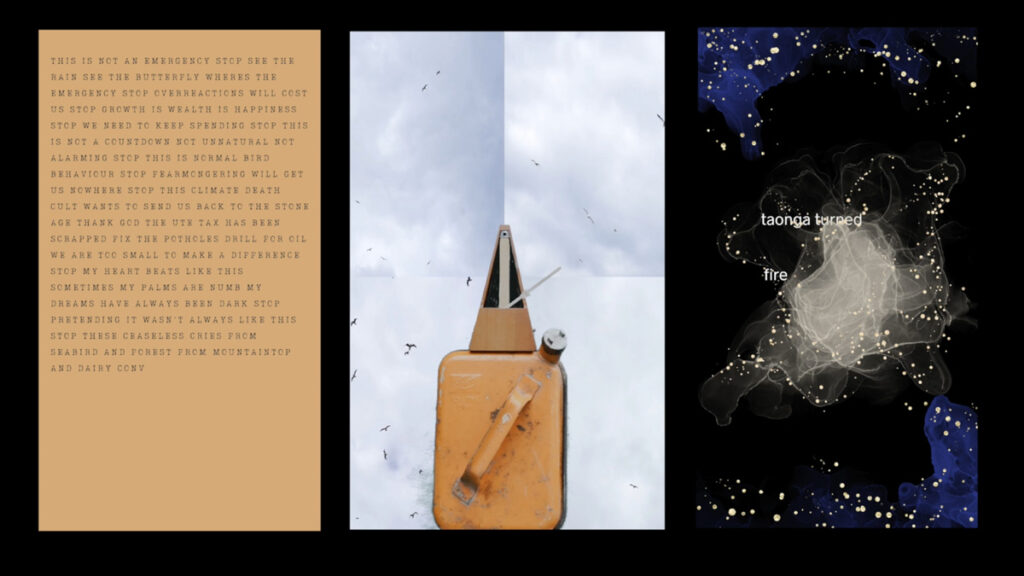Pam McKinlay. Juried Artist
Data Wall at QUT Kelvin Grove
Artist Statement
Honohono is an exhibition that explores healing herenga (interconnectedness) ancestral ties and our kuleana (responsibilities) to the environment. Leading with an indigenous framework, it explores boundaries and their malleability: the skin as a permeable surface between ourselves and the elements as extensions of ourselves the borders that prevent us from entering lands where our ancestors walked and heard birdsongs, the borders that keep our ancestral artifacts behind glass to be preserved yet inaccessible.
This gathering of artists and artworks is the culmination of a public diplomacy creative exchange with Kānaka Maoli/U.S. lead artist Tiare Ribeaux. This Leonardo Creative Impact Lab utilised community-driven processes and expanded media art projects to address the challenge of climate change. Local artists have explored climate change in Aotearoa New Zealand using indigenous methodologies interwoven with their personal creative practices. Ribeaux facilitated these interdisciplinary collaborations drawing on her own media art practice and Hawai’ian cultural heritage.
The creative prototypes in this exhibition weave and traverse these questions and themes through multiple mediums including video projection, sculpture, land art, augmented reality, sound-mapping and more in an attempt to Honohono.
About the artists
Creative Impact Lab Ōtepoti Dunedin (2023–24) is a collective of 10 artists ranging from science communication to theatre to multimedia art. The collective combines their broad skills to explore Ōtepoti Dunedin’s environment and heritage.
Pam McKinlay (Tangata Tiriti) is a weaver and curator of the art+science project based in Ōtepoti DunedinNew Zealand. Her practice is concerned with the connections between new ideas and deep knowledge – the process and practice of making and the process and practice of connecting with the communities she lives in.
Craig Cliff (Tangata Tiriti) was born in Manawatū and has lived in Ōtepoti Dunedin since 2021. He is the author of three books most recently the novel Nailing Down the Saint (Penguin Random House2019)and has also published poetry short stories, essays, columns, and reviews. In addition to bringing climate mahi into his artistic practice. Craig currently leads the Net Carbon Zero Programme at the University of Otago.
Paulina Barry: Paulina Barry is from from the Puget Soundnow based in DunedinAotearoa New Zealand. Her works are place and community-based focusing on bio-heritage and restoration of the human/nature connection. She explores a variety of different mediums including digital art film & animation, fiber arts, land art and street art. Recurring themes include natural history, paleo-art and the role of colonialism in environmental and cultural degradation. Her works have been featured in non-fiction books The Vashon Heritage Museum on public display and in secret.
Hayley Walmsley: I am of Ngati Kuraand Nga Puhi descent. Growing up in Te Taitokerau – Northland New Zealand I was taught that the sand, dirt and stones are the blood and bones of our ancestors and this in part is why we have such a call to take care of the environment and the life it supports. A meditative reminder to look for the small details this is a love letter to nature. The wairua of these special spaces becomes apparent through tracing: Making the invisible visible. This work condenses significant time into an animation that celebrates this place that we inhabit.
Credits: Pam McKinlay; Craig Cliff; Hayley Walmsley; Paulina Barry

